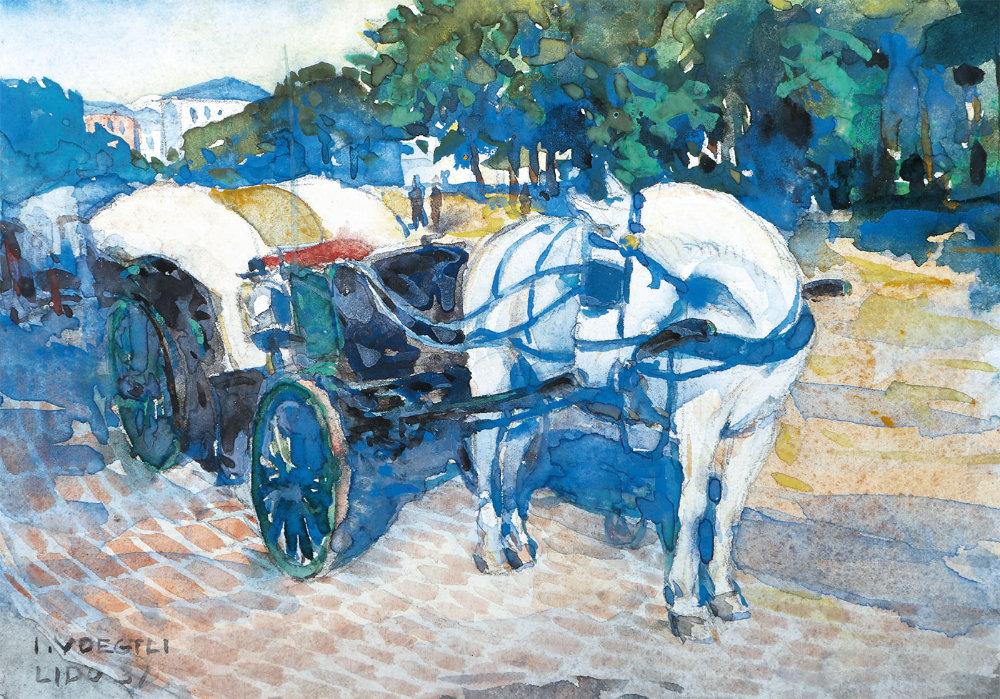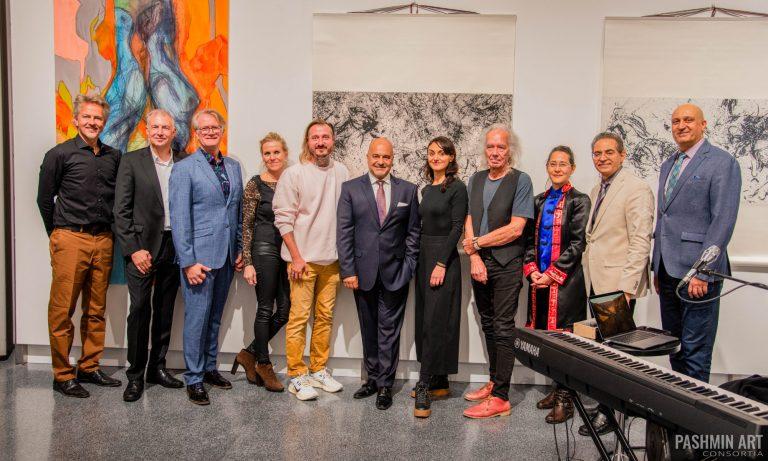“Umwelt” is a German word for “kingdom” or “world.” It is a biological term coined by Uexküll (1934, p. 5) to denote the world as seen by an animal. The term brought about a revolution in human culture and affected Heidegger’s criticism on Western civilization and human-centeredness. Throughout history, Western philosophy has looked at man as the center and the other species as the edges. Owing to this Cartesian viewpoint, man gave permission to his children to penetrate into nature and make it his slave. In this manipulation, animals were used in medical labs, farms, industries, etc., to serve human needs. Descartes called them “soulless machines” (Cottingham, 1992. p. 242). Uexküll was the first writer who asked, “How is life from the eyes of a rabbit, a tick, or a dog?”
Julius Voegtli was a contemporary of Uexküll and might have been familiar with his theory. In “Lido,” he portrays a white horse attached to a heavy carriage on a cobblestone street. The horse has turned its neck to look back, but its eyes are shuttered by blinkers. What is the horse looking for with shuttered eyes? There can be two answers: the heavy carriage or the rider’s place. Is it acceptable to claim that horse and rider are so close in relationship that the lack of one makes the other react? Or is it correct to analyze the horse’s turning of neck as a sign of objection to the amount of burden to be carried? Or a protest to its blinders? Or is it turning its head because of the direct, disturbing sunlight? These questions cover an anthropometric viewpoint. What if one goes deep into the horse’s mind and life? It seems Voegtli aims at deconstructing Western culture by making the viewer ask themself questions as described.
Now, if one looks at the painting mechanically, one will notice that it is divided into two parts: the right side, including the trees and the horse, and the left, including the buildings and the carriage. As is evident, the trees stand in symmetry with the buildings (especially in number and position). What divides these two sides are the two men standing in the middle but a bit farther (seen if one looks closely behind the saddle). The logical interpretation of this classification is that man has made a division between nature and culture. The horse, which belongs to nature, is made to carry heavy loads with closed eyes, and the trees are planted and limited by a cobblestone avenue. A large amount of blue has been used to denote the calmness of nature, as well as to create a symmetry with the greenness of trees and, somehow, with the whiteness of horse, carriage, and buildings. The horse is standing silently and not moving on the street, which also signifies its being tamed by man, metaphorically shown by means of its bit, saddle, and fallen neck.
In summary, in “Lido,” the painter prompts the viewer to think from a horse’s perspective”: Are you still looking for a rider? Or carriage? In this way, he challenges all of Western culture and its humanism. This is, perhaps, why the men are painted smaller and farther than the horse, although they are more in number and higher in power.
Source: Tavousi, Sohrab (2022) “On the Artwork Lido”, in: JULIUS VOEGTLI: A Swiss Impressionist Pioneer, Edited by Nour Nouri & Davood Khazaie, Pashmin Art Publishers, pp.54-55.



